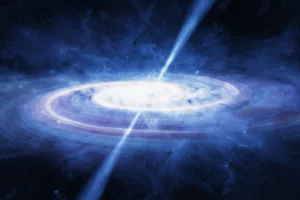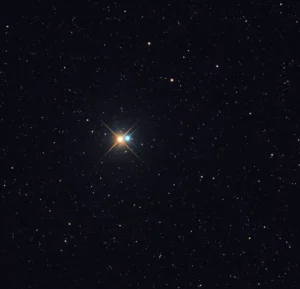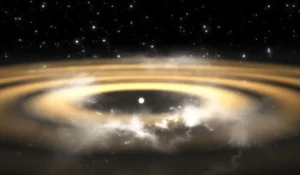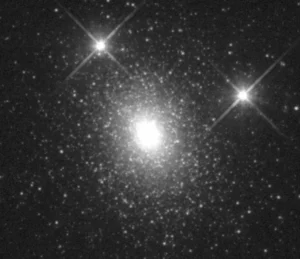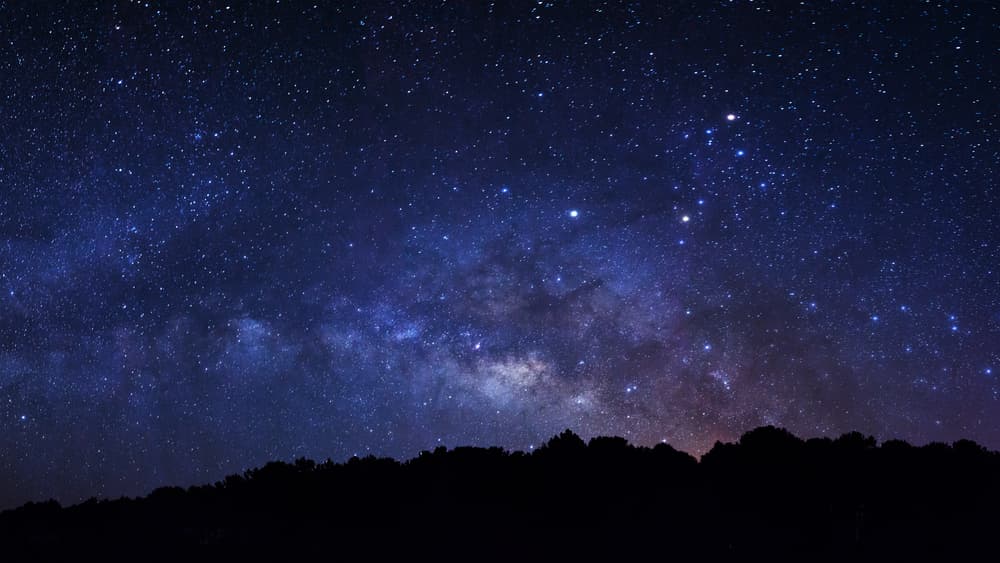
An Introduction to Deep Sky Objects
The category labelled “deep sky” comprises every astronomical object that is beyond our solar system.
Generally, these objects in the depths of space are not visible to the naked eye, but the brightest of them can be seen with a small telescope or even with quality binoculars.
The stars – are more or less like our Sun, some with planets orbiting around them. They are of no great interest to the amateur astronomer devoted to deep sky observations because even when seen through the world’s most powerful telescopes they have a dot-like appearance, due to the huge distances that separate them from us.
Double stars – if you watch different stars through a telescope, you may come across a star and its companion (another star) that stays in the neighborhood at a close distance. You have found a double star!
Double stars are of two types: optical double stars and physical double stars. An optical double is composed of two stars, which appear so close to each other by mere chance since no physical connection is between them.
Their counterparts are the physical doubles. In this case, the two stars are connected by gravitation and they orbit around a common center. The physical doubles (or binary stars) are much more numerous than the optical doubles. If three or more stars orbit around their common gravitational center, they are called multiple stars.
Variable stars – these are the stars that change their brightness in a perceptible way. They are of two types: intrinsic variables and extrinsic variables.
Intrinsic variables change their brightness for physical reasons (contraction, eruption, or expansion). Extrinsic variables are stars that change their brightness due to periodical eclipses caused by another star orbiting around them, or because of star rotation effects.
Nebulae – they are huge interstellar clouds composed of ionized gases (over 95% hydrogen) and dust. The nebulae in our galaxy are called galactic nebulae, while those in other galaxies are called extragalactic nebulae. There are four types of nebulae.
Diffuse nebulae – these are agglomerations of gases and dust, which frequently become places where stars are born. If stars formed inside the nebula are hot and massive enough, they excite the gases and make them emit visible radiation (“shine”). In this case, the nebula is called an emission nebula. There are also nebulae that only reflect the light of the stars; they are called reflection nebulae.
Supernova remnants – a type II supernova is a star far more massive than our Sun, which will explode quite violently after a while when its evolution cycle reaches its end. Alternatively, falling matter on a white dwarf star can cause it to explode as a supernova of type I. These explosions generate a cloud of matter with a nebula-like appearance, which is called a supernova remnant.
Planetary nebulae – under certain circumstances, when a star has burned all its fuel, it will spread part of its mass in the form of a gas sphere surrounding it, which becomes visible due to high-energy excitation derived from the central star. The sphere of glowing gas is called a planetary nebula because it looks like a planet when viewed with a small telescope.
Dark nebulae – they are dust clouds which obstruct the stars behind them. When you observe the night sky with a telescope or a binocular, you will notice that areas very rich in stars will be spotted by small, dark, starless “clouds”; these are dark nebulae.
Star clusters – not all stars are isolated like our Sun; some of them are part of stellar clusters, where all stars are of about the same age. Star clusters are divided into open clusters and globular clusters.
Open clusters – they contain a small number of relatively young stars. Most of them can be found in the spiral arms of our galaxy, and therefore if you happen to scan the Milky Way with binoculars or a telescope, you will discover hundreds of open star clusters.
Globular clusters – these are huge spherical formations, containing a great number of stars (up to 100 million). The stars inside a globular cluster are about 8 billion years old and were born in the early years of our galaxy’s formation.
Globular clusters are found in a halo around our galaxy, thus being farther from us than open clusters. Their distribution in the sky is very interesting: most of them are situated on one side of the night sky, and almost none can be found on the other. More than one-third of globular clusters are located in the constellation Sagittarius, which occupies only roughly 3% of the sky.
Galaxies – these deep sky objects are composed of thousands of millions of stars, kept together by gravitational attraction. They are classified according to shape.
Spiral galaxies – the central nucleus of this type of galaxy is surrounded by huge spiral arms formed of stars and interstellar matter. Due to their orientation at different angles from us, some of these galaxies will appear as elongated patches of light (we see these on the edge), while others will have a circular shape (seen face-on).
Roughly, 30% of spiral galaxies have arms that start from the two ends of a star and gas bar that crosses the bulge. They are called barred spiral galaxies, and our own galaxy, the Milky Way, is part of this class.
Elliptical galaxies – these galaxies can range in size from hundreds of millions to over one trillion stars, generally crowding at the center. As their name suggests it, they are ellipse-shaped and have no spiral arms. Elliptical galaxies contain little hydrogen, which means that new stars are no longer born inside them.
Irregular galaxies – these are galaxies that feature neither spiral nor elliptical morphology. Irregular galaxies are often chaotic in appearance and are thought to make up a quarter of all galaxies.
Quasars – a quasar (contraction of quasi-stellar radio source) is a very distant object that emits more energy than dozens of normal galaxies. Our best evidence suggests that a quasar is the extremely bright active nucleus of a young galaxy, containing a central supermassive black hole.

Emil, an avid astronomy writer, formerly owned and ran nightskyinfo.com, making the universe more comprehensible for his readers. He has recently handed over its reins to Tom Urbain from starlust.org, ensuring that his legacy of simplifying the stars continues to enlighten and inspire.
Discover More Deep Sky Objects to Observe🔭
This page is part of our collection of deep-sky objects articles. If you enjoyed the read, then you’ll love the following articles.

